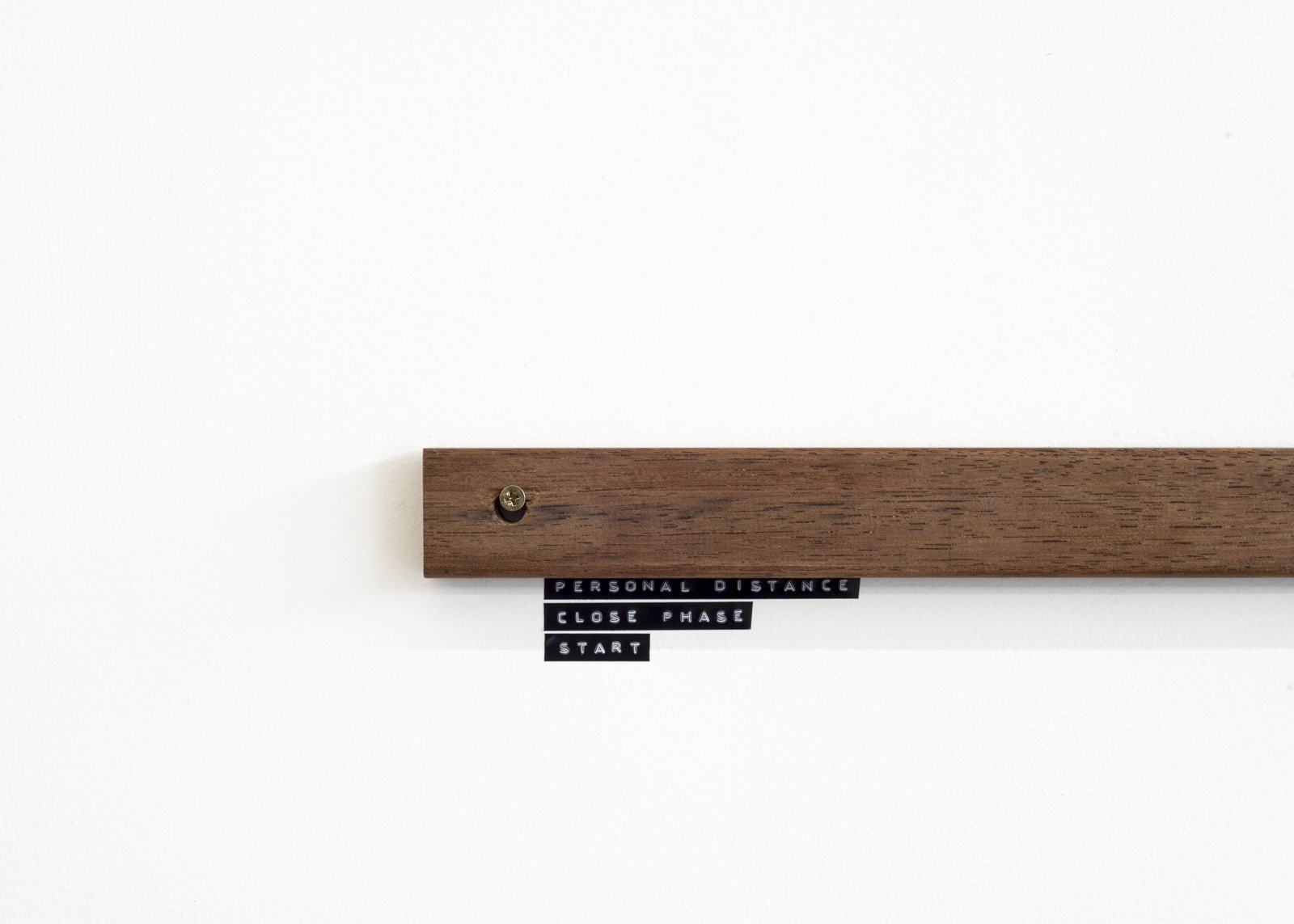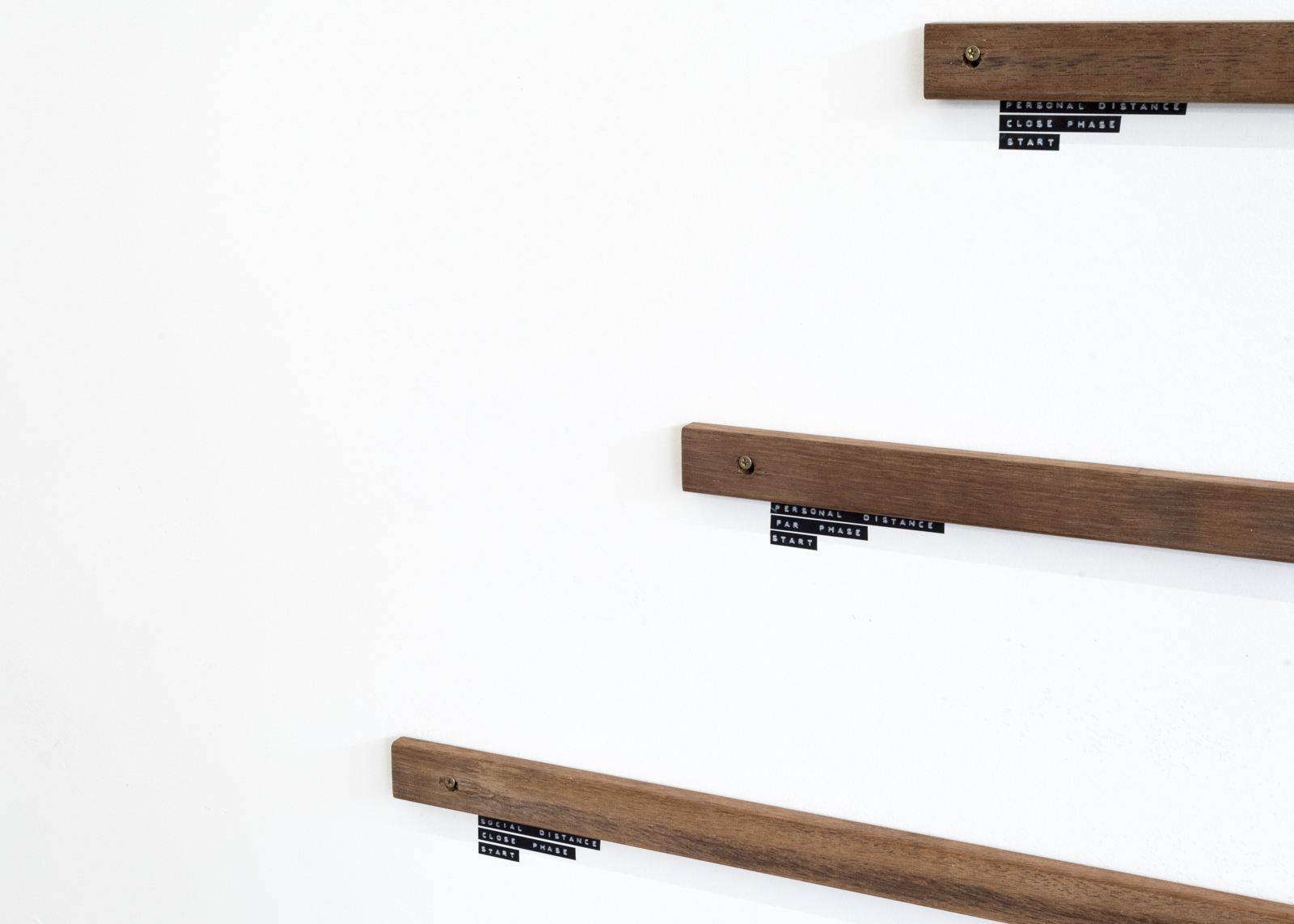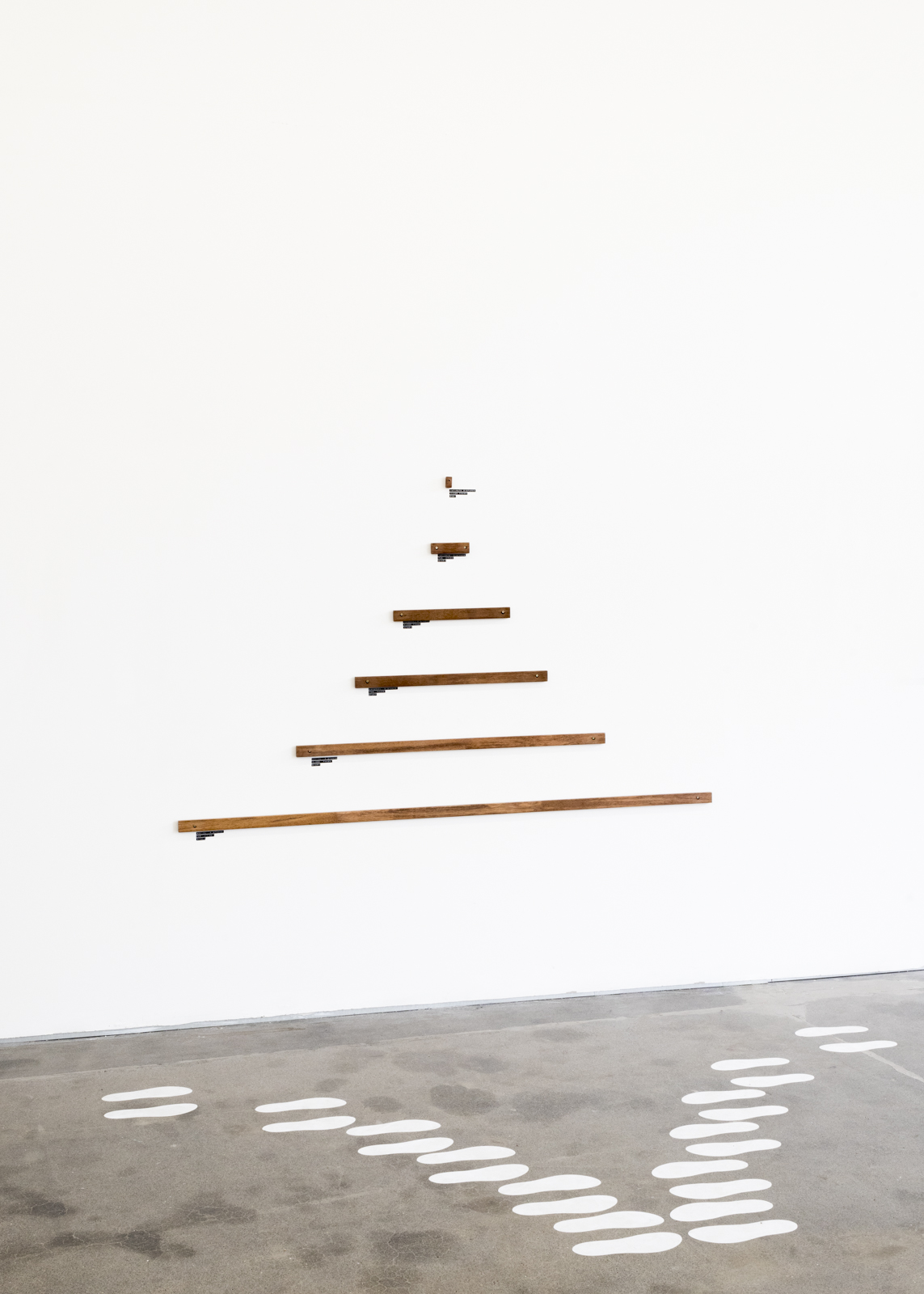



Vinyl floor print and timber, 2.69m x 2.26m
–––––––––––––
The Hidden Dimension
Drawing directly from the 1966 text of the same title by Edward T. Hall, The Hidden Dimension is an interactive installation piece within
Everyone Else Attended Some Secret Lesson... that works to enact and test the key principles regarding distancethat are asserted within
Hall’s theory of Proxemics.
– “Intimate Distance— Far Phase
(Distance: six to eighteen inches)
Heads, thighs, and pelvis are not easily brought into contact,
but hands can reach and grasp extremities. The head is
seen as enlarged in size, and its features are distorted...
...Personal Distance— Close Phase (Distance: one and a half to two and a half feet) The kinesthetic sense of closeness derives in part from the possibilities present in regard to what each participant can do to the other with his extremities. At this distance, one can hold or grasp the other person...
...Personal Distance— Close Phase (Distance: one and a half to two and a half feet) The kinesthetic sense of closeness derives in part from the possibilities present in regard to what each participant can do to the other with his extremities. At this distance, one can hold or grasp the other person...
Social Distance— Close Phase (Distance: four to seven feet) Head size is perceived as normal; as one moves away from the subject, the foveal area of the eye can take in an everincreasing amount of the person. At four feet, a one-degree visual angle covers an area of a little more than one eye...”
...Personal Distance— Close Phase (Distance: one and a half to two and a half feet) The kinesthetic sense of closeness derives in part from the possibilities present in regard to what each participant can do to the other with his extremities. At this distance, one can hold or grasp the other person...
...Personal Distance— Close Phase (Distance: one and a half to two and a half feet) The kinesthetic sense of closeness derives in part from the possibilities present in regard to what each participant can do to the other with his extremities. At this distance, one can hold or grasp the other person...
Social Distance— Close Phase (Distance: four to seven feet) Head size is perceived as normal; as one moves away from the subject, the foveal area of the eye can take in an everincreasing amount of the person. At four feet, a one-degree visual angle covers an area of a little more than one eye...”
Hall, E T, 1966, The Hidden Dimension,
Doubleday, Garden City, New York, USA
Doubleday, Garden City, New York, USA
Select points from Hall’s thinking on the roles that interpersonal distance play in the establishment and indication of relationships is translated from impersonal text to a spatial and emotive exercise where principles can be tested and felt first-hand by particpants. Feet are placed along the ground in a mirrored pattern alongside a set of rulers hung on the adjacent wall in a manor that aligns directly with not only each other, but also a selection of distances key to Hall’s thinking on the subject. Here, an audience is invited to move through the exercise,either by using the rulers to space one another or by following the layout of the feet, ideally from furthest to closest, thereby assigning emotional and spatial understanding to the guide of Hall’s text. This process creates a space where participants may enter a setting that enables a meditation on physical distance, the pressures that come with it’s manipulation and variance, and how this as a mechanism affects us internally.